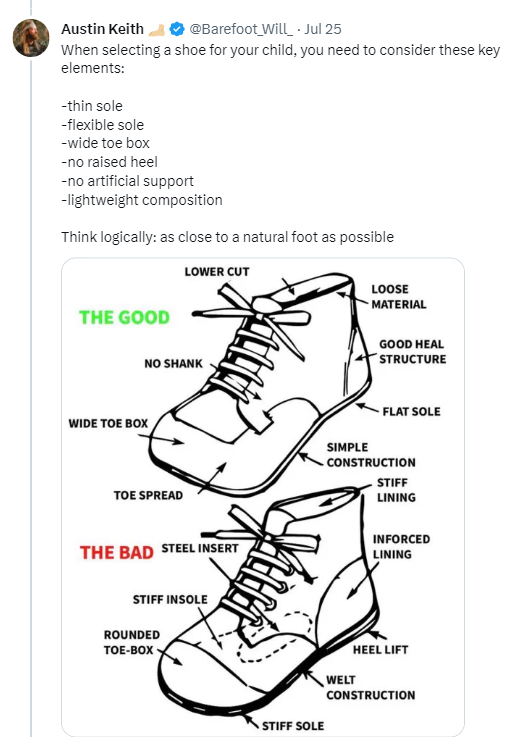As an adult, you may have feet problems that developed during childhood. Podiatrist visits are costly and having unhealthy feet can alter the quality of life in adulthood. It’s important to maintain the health of children’s feet. They don’t develop fully until the age of 12. Before then, they need to be taken care of to ensure the bones aren’t moulded into unhealthy shapes.
What you need to know about children’s bones
The foot is made up of 26 bones and 35 joints. However, when babies are born their feet don’t have bones so they are soft and pliable because they are mostly made up of fatty tissues – muscles, ligaments, and tendons which later develop into bones.. Babies start walking at around 8-18 months.
Toddlers are flat-footed. As they start walking, their feet turn inward because their muscles aren’t stiff or strong enough. As they strengthen, the flat-footedness recedes and the feet face forward. The foot arch develops at around 2-3 years. This is why babies learning to walk shouldn’t wear solid shoes.
Health: Tips For Stronger Bones And Teeth
As toddlers learn to walk, their feet gather sensory information from the ground. This is why it’s important for them to be barefoot, in socks, or in soft-soled shoes. Only after they have been walking confidently for a long time can they be introduced to shoes. If they wear restrictive or supportive shoes too early, it can affect the development of their feet. Toddlers’ feet also grow very fast, therefore their shoes need to be updated every few months. Shoes that are too tight can lead to problems walking, and issues such as ingrown toenails.
The shoes should also have a wide toe area to ensure the foot develops properly. This ensures the foot remains strong and the tendons in the ankles develop fully. Narrow shoes prevent the natural splay of the toes.
What you need to consider when choosing children’s shoes
Babies need to walk barefoot for their bodies to develop the sensory feedback of their feet. Research shows that allowing toddlers to walk barefoot helps boost neurocognitive development. It helps with balance, spatial awareness, and processing environmental stimuli. However, it’s not always safe for toddlers to walk barefoot.
When choosing a safe shoe for a child to wear, consider the following:
- The shoe is lightweight.
- It fits length and width-wise.
- There is enough wiggle room for the toes.
- The sole is flexible and flat. Bend the shoe near the toe to confirm this.
- The shoe matches the shape of the foot with the front matching the spread of the toes.
- The heel is solid but not raised.
- Laces, Velcro straps, or strappy ties to ensure the foot is secure in the shoe.
Avoid shoes with steel inserts in the body. In addition, ensure the internal lining is absorbent and flexible.

Common foot problems in children and the solutions
1. Flat feet
A normally developed foot has an arch. It’s known as the medial arch. This is formed by bones, muscles, and ligaments. Flat feet are normal in toddlers and infants. But they possess a lot of flexibility. By allowing kids to walk, the arches strengthen and the fat pads in the sole of the foot become less noticeable. Normal arches develop within six years. If the feet remain flat and the child experiences pain, seek medical attention immediately.
2. Pigeon toes
These are feet that turn inward. It’s also known as metatarsus adductus. Many children walk in-toed, which can come from the toes, lower leg, or upper leg. Children need to see a podiatrist if their pigeon toes are severe, affects only one leg, is painful, and isn’t improving with age.
3. Out-toeing
Sometimes, children walk with their feet facing outward. However, this resolves itself as kids grow older. If it doesn’t, parents may need to see a podiatrist. This is especially when there is pain, it’s only in one leg or it’s severe.
4. Clubfoot
This is when a child’s foot is twisted and pointing inwards or down. It isn’t painful but it can cause discomfort when walking. Stretches, surgery, or a cast can help correct a clubfoot. This is best corrected during early childhood.
5. Polydactyly
When a child develops extra toes or fingers, this is known as polydactyly. It can happen without a family history. It doesn’t always affect mobility and function. However, if surgery is necessary, it’s best done when they’re still a child.
Check out this thread for shoe recommendations for babies.
Children’s feet are most susceptible to the damaging effects of modern footwear
Feet do not fully develop until the age of 12
Until then, their feet are extremely moldable
Here’s exactly what you need to know in order to keep your child’s feet healthy🧵 (Shoe list included) pic.twitter.com/QMEFR13TUT
— Austin Keith 🦶🏼 (@Barefoot_Will_) July 25, 2023
Check out:
A Guide To Essential First Aid For Babies And Young Children
Parenting: 7 Things To Know About Newborn Babies
Health: Habits That Lead To Weak Bones
Colic In Babies: Causes, Symptoms And Management
Parenting: 8 Tips For Soothing A Teething Baby

